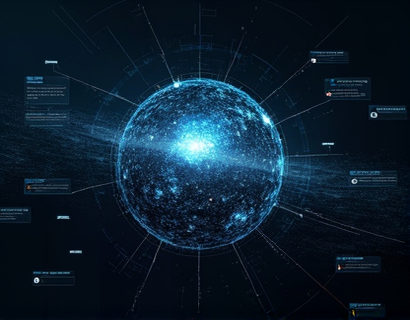Multi-Channel Announcement Dynamics: Streamlining Communication for Businesses and Users
In the fast-paced world of business and personal communication, the ability to effectively reach and engage with a diverse audience across multiple channels is crucial. The landscape of communication is increasingly complex, with businesses and individuals needing to publish updates, announcements, and important information across various platforms simultaneously. This challenge necessitates a robust and streamlined approach to multi-channel communication. This guide delves into the dynamics of multi-channel announcement strategies, offering expert insights and practical tips to enhance visibility, optimize announcements, and foster stronger connections with your audience.
Understanding Multi-Channel Communication
Multi-channel communication refers to the strategy of using multiple platforms and channels to reach and engage with your audience. This approach is essential in today's digital age, where users consume information through a variety of devices and platforms, including social media, email, websites, and messaging apps. Each channel has its unique characteristics and audience behaviors, making it vital to tailor your messages appropriately while maintaining consistency across all platforms.
Benefits of Multi-Channel Communication
- Increased Reach: By using multiple channels, you can reach a broader audience, ensuring that your message is seen by more people.
- Enhanced Engagement: Different channels cater to different preferences, allowing you to engage with users where they are most active.
- Improved Credibility: Consistent and timely communication across multiple channels can enhance your brand's credibility and reliability.
- Better Customer Service: Multi-channel communication enables businesses to provide support and assistance through various touchpoints, improving customer satisfaction.
Challenges in Multi-Channel Communication
While the benefits are clear, implementing a multi-channel communication strategy comes with its own set of challenges. One of the primary issues is the complexity of managing multiple platforms, each with its own set of tools, protocols, and audience expectations. This can lead to fragmented messaging, inconsistent branding, and a disjointed user experience. Additionally, the time and resources required to maintain a presence on multiple channels can be significant, often overwhelming small businesses and individuals.
Streamlining Your Communication Strategy
To overcome these challenges, it is essential to streamline your communication strategy. This involves selecting the right tools and platforms that can integrate seamlessly, allowing you to publish and manage content efficiently. A powerful multi-channel communication platform can serve as the central hub for all your communication needs, simplifying the process of creating, scheduling, and publishing updates across various outlets.
Key Features of a Robust Multi-Channel Platform
A well-designed multi-channel communication platform should offer a range of features to support your communication goals. Here are some key functionalities to look for:
Centralized Content Management
A centralized content management system (CMS) is crucial for organizing and managing your announcements. This feature allows you to create, edit, and schedule content from a single interface, reducing the risk of errors and ensuring consistency across all channels.
Multi-Channel Publishing
The ability to publish content simultaneously across multiple channels is a significant advantage. This feature ensures that your message reaches your audience in real-time, maintaining relevance and urgency. Support for popular platforms such as social media, email, blogs, and news sites is essential.
Audience Segmentation and Targeting
Effective communication involves tailoring your messages to specific audience segments. A robust platform should offer advanced segmentation tools, allowing you to create targeted campaigns based on demographics, interests, and behavior. This personalized approach can significantly enhance engagement and conversion rates.
Analytics and Reporting
Monitoring the performance of your announcements is vital for optimizing your strategy. A comprehensive analytics dashboard provides insights into engagement metrics, reach, and audience behavior. This data can help you identify what works and what doesn't, enabling you to make data-driven decisions and refine your approach over time.
Best Practices for Multi-Channel Announcements
To maximize the effectiveness of your multi-channel communication, consider the following best practices:
Consistency is Key
Maintain a consistent brand voice and visual identity across all channels. This consistency helps build recognition and trust with your audience, reinforcing your brand message.
Timing Matters
Consider the optimal times to post on each channel based on your audience's activity patterns. For instance, social media posts may perform better during peak usage hours, while email campaigns might yield higher open rates in the morning or late afternoon.
Personalization Enhances Engagement
Use audience data to personalize your messages. Addressing users by name, referencing their previous interactions, and tailoring content to their interests can significantly boost engagement and loyalty.
Test and Iterate
Continuous testing and iteration are essential for improving your multi-channel strategy. Experiment with different content types, formats, and posting times to see what resonates best with your audience. Use the insights gained to refine your approach and enhance performance.
Case Studies and Real-World Applications
Examining real-world examples can provide valuable insights into the practical application of multi-channel communication strategies. Consider the following scenarios:
Case Study 1: A Tech Startup
A tech startup launched a new product and used a multi-channel approach to create buzz. They published a teaser video on YouTube, shared detailed blog posts on their website, and promoted the launch on Twitter and LinkedIn. By segmenting their audience and personalizing messages, they achieved a 40% increase in pre-orders within the first week.
Case Study 2: A Non-Profit Organization
A non-profit organization used email and social media to raise awareness and funds for a new initiative. They created engaging content, including infographics and videos, and targeted specific donor segments with personalized messages. Their campaign resulted in a 50% increase in donations and a significant boost in volunteer sign-ups.
Implementing a Multi-Channel Communication Strategy
Implementing a multi-channel communication strategy requires careful planning and execution. Here’s a step-by-step guide to help you get started:
Step 1: Define Your Goals
Clearly define what you want to achieve with your multi-channel communication. Whether it's increasing brand awareness, driving sales, or enhancing customer support, having clear goals will guide your strategy.
Step 2: Identify Your Channels
Assess which channels align best with your goals and audience. Consider the most popular platforms among your target demographic and the resources required to manage each channel effectively.
Step 3: Develop a Content Plan
Create a content calendar that outlines the type of content, posting times, and channels for each announcement. Ensure that your content is relevant, valuable, and consistent across all platforms.
Step 4: Choose the Right Tools
Select a multi-channel communication platform that offers the features you need. Look for tools that integrate well with your existing systems and provide robust analytics and reporting capabilities.
Step 5: Train Your Team
Ensure that your team is trained on the chosen platform and understands the importance of consistency and personalization. Regular training sessions and updates can help maintain high standards of communication.
Step 6: Monitor and Optimize
Continuously monitor the performance of your announcements using the analytics provided by your platform. Use this data to make informed decisions and optimize your strategy over time.
Conclusion
In today’s interconnected world, mastering multi-channel communication is essential for businesses and individuals aiming to connect effectively with their audience. By streamlining your communication strategy, leveraging the right tools, and following best practices, you can enhance your message reach, engagement, and overall impact. Embrace the dynamics of multi-channel communication to stay ahead in the competitive landscape and build lasting relationships with your audience.










































